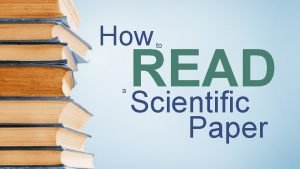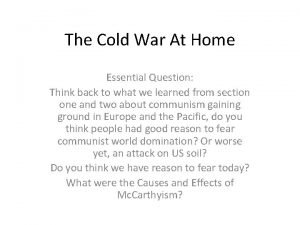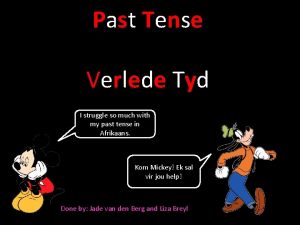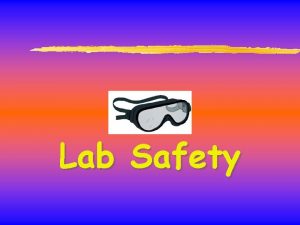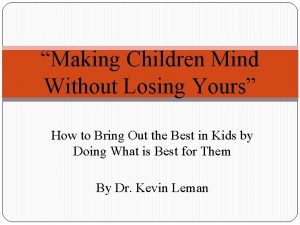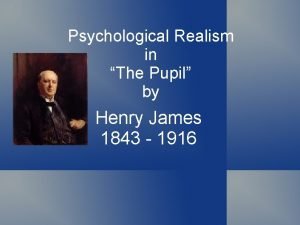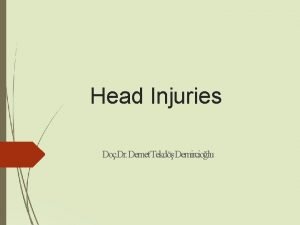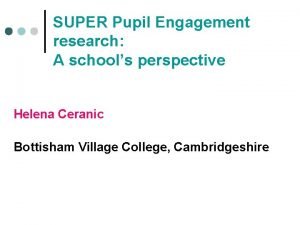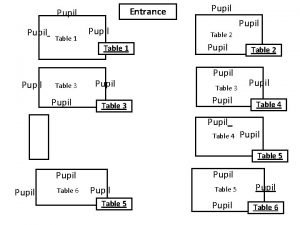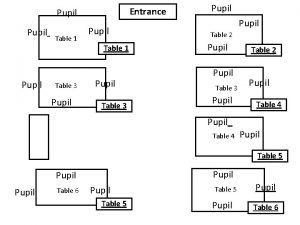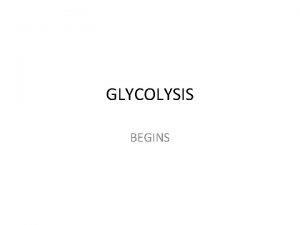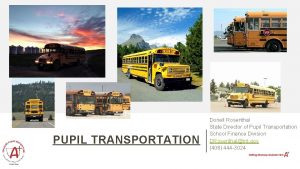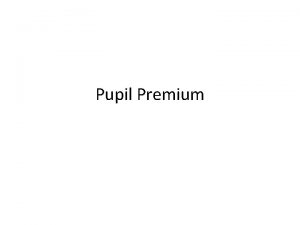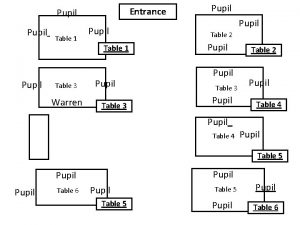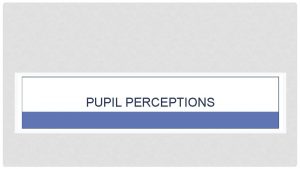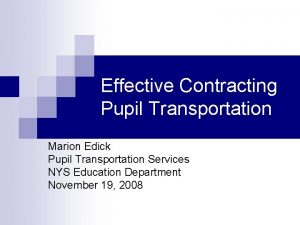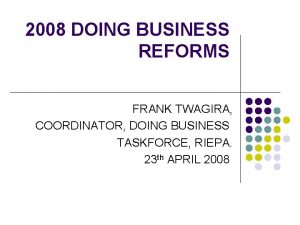Is this pupil doing okay Is this pupil
















- Slides: 16

Is this pupil doing okay?

Is this pupil doing okay? What lies behind this grade?

Behind the grade is the simple grade descriptor… Grades and Descriptors A This student has consistently shown that s/he has a secure grasp of all of the curriculum at this stage. B This student has consistently shown that s/he has a secure grasp of almost all of the curriculum at this stage. OR This student’s work has shown an extremely good grasp of the curriculum at this stage but has done so inconsistently. C This student has consistently shown that s/he has a secure grasp of most of the knowledge and skills expected at this stage. OR This student’s work has shown a good grasp of the curriculum at this stage but has done so inconsistently. D This student has consistently shown that s/he has a secure grasp of some of the knowledge and skills expected at this stage. OR This student’s work has shown a good grasp of the knowledge and skills expected at this stage but has done so inconsistently. E This student has consistently shown that s/he has a grasp of some of the knowledge and skills expected at this stage. U Because of absence, failure to submit work or both, this student’s teacher has not be able to make an accurate judgment about their achievement.

‘second-order concepts” “secure grasp” “shown” ‘Secure grasp’ means that the teacher is confident that the student can repeat the performance of a particular skill or recall the knowledge. These two things are often not separate and what this may mean in practice is that they are able to demonstrate a skill using their knowledge. It is envisaged that teachers would be able to produce some evidence to justify their decisions if necessary. This evidence might well make up a teacher’s markbook and they may use the Go 4 Schools system to record it. However, it should always be in the form that is most useful. Examples of evidence that might be useful include recorded grades, recorded test scores, a teacher’s professional judgment of a worth of contributions to a discussion, lap times or game scores, copies of written or recorded feedback, quiz results, exercise books… In short, it is the responsibility of the teacher to be able to justify the grade and it is the responsibility of the head of faculty or subject leader that the marks that a teacher number of and type of assessments are as valid and reliable as possible and the number of assessments helps teachers make valid and reliable judgments about grades as far as that is possible. . To an extent, this is a synonym for ‘consistently’. “almost all” Work (written, oral or performative) in ‘formal assessments’ or every-day classwork of a ‘very good’ standard or that has produced a ‘high’ grade should show that the student has grasped almost all of the curriculum both in terms of substantive and second-order concepts. “inconsistently” If a student has produced work of the quality of the grade above but has only done so sporadically, they should be awarded the grade below. “consistently” “formal assessments” Almost every instance of a student’s work. Some subject areas may choose part of their assessment system to be the assessment of pupils using ‘formal assessments’ at key points in certain topics. This might include essays, performances of plays, sporting tournaments, the write-up of experiments or tests. There may be exceptions where the quality of a student’s work deviates from their usual performance but these deviations must not be frequent enough for the teacher to doubt the ‘secure grasp’ of a skill or piece of knowledge or for the teacher to have to doubt their judgment (‘all’, ‘almost all’, ‘most’, ‘some’) about the amount of knowledge and quality of skills. Grades and Descriptors A This student has consistently shown that s/he has a secure grasp of all of the curriculum at this stage. B This student has consistently shown that s/he has a secure grasp of almost all of the curriculum at this stage. OR This student’s work has shown an extremely good grasp of the curriculum at this stage but has done so inconsistently. Simple but not simplistic… If a student has shown the capacity for work at this level but has only done so sporadically, their work should be judged as ‘inconsistent’ and they should receive the grade below. C D “all” ‘Work (written, oral or performative) in ‘formal assessments’ or every-day classwork of an ‘excellent’ standard or that has produced a ‘top’ grade should show that the student has grasped all of the curriculum both in terms of substantive and second-order concepts. “top” ‘’Top’ in this context is defined by the faculty. However, grades in the 20 th centile might be a good model. This student has consistently shown that s/he has a secure grasp of most of the knowledge and skills expected at this stage. OR This student’s work has shown a good grasp of the curriculum at this stage but has done so inconsistently. This student has consistently shown that s/he has a secure grasp of some of the knowledge and skills expected at this stage. OR This student’s work has shown a good grasp of the knowledge and skills expected at this stage but has done so inconsistently. E This student has consistently shown that s/he has a grasp of some of the knowledge and skills expected at this stage. U Because of absence, failure to submit work or both, this student’s teacher has not be able to make an accurate judgment about their achievement. In other words, their best performance, if repeated more regularly would earn them the grade above. Second-order concepts can be understood as ‘the things that people doing this subject think about. ’ In history this might be ‘change and continuity’; in science it might be ‘fair testing/empiricism’; in French ‘speaking’; n PE ‘use of space’… I hope that these examples are clear but if they are not, it makes a point about the expertise needed to teach different disciplines let alone devise a curriculum that allows, prepares and expects students to make progress in those disciplines. The division between substantive concepts and substantive knowledge may not always be clear. However, the distinction between substantive concepts and second-order concepts should be clear. “the curriculum” ‘The curriculum’ is a CVC-departmentally-defined set of substantive knowledge and substantive and second-order concepts that are a proxy for the domain of a subject discipline. Each department or faculty should define what their curriculum should and should not include and how it is sequenced. They should do this based on their professional judgment as experts in their subject discipline and as pedagogues. Curriculum planners should have one eye on the national picture and, as far as possible, be conversant with the current debates within their subject communities. Similarly, they should be aware of legal requirements and the requirements of public examinations (i. e. GCSEs) in order to help them do this. ‘substantive concepts” Substantive concepts can be understood as the ‘categories of substantive knowledge’. In biology this might include ‘bio-chemical reactions’; in history, ‘monarchy’; in French, ‘verb conjugation’; in PE, ‘the rules of basketball’… The division between substantive concepts and substantive knowledge may not always be clear. However, the distinction between substantive concepts and second-order concepts should be clear. “at this stage” ‘substantive knowledge” The curriculum for each subject discipline should be a model of how students can and should progress in their understanding of substantive knowledge and of the substantive and second-order concepts in that discipline. Substantive knowledge can be understood as ‘examples of the things that the subject is about’. In biology this might include ‘photosynthesis’; in history, ‘Richard II’; in French, ‘the verb être’; in PE, ‘the travelling rule’… Year 8 should be harder than Year 7. Year 9 should be harder than Year 8. By the time students end Key Stage 3 they should have the knowledge and skills necessary to approach Key Stage 4 studies (i. e. GCSE, i. GCSE, BTEC etc. ) Proposed Criteria for Report Grades “most” “some” A student achieving this grade is only sometimes producing work (written, oral or performative) in ‘formal assessments’ or everyday classwork of a ‘fair’ standard. Or, their work receives ‘very low’ grades. Work (written, oral or performative) in ‘formal assessments’ or every-day classwork of a ‘good’ standard or that has produced a ‘middling’ grade should show that the student has grasped most of the curriculum both in terms of substantive and second-order concepts. The division between substantive knowledge and substantive concepts may not always be clear. However, the distinction between substantive knowledge and secondorder concepts should be clear.

To use the descriptors, you use yoru markbook… …and your professional judgment.

Behind the markbook might lie task-specific markschemes…. …and your professional judgment.

Behind the task-specific markschemes is your knowledge of…. …the nature of the discipline you teach… …the professional literature in your discipline… …your expertise in that discipline… …the National Curriculum… …the requirements of GCSEs and beyond… …and your professional judgment.

You should be able to justify the grades you give. The evidence that you use to make these justifications depends on what evidence best helps you do that.

Is this pupil doing okay? What lies behind this grade?

Behind the colour-code is the data the school has… …and your professional judgment.

Gradings are very simple… Exceeding our expectations Meeting our expectations Slightly below our expectations Way below our expectations

The bottom two should act as a flag for the teacher and perhaps Ho. F, Ho. Y or Tutor. Exceeding our expectations Meeting our expectations Slightly below our expectations Way below our expectations

The flag should be the start of a professional conversation. It should never be used as an accusation or a grade of the teacher.

Is this pupil doing okay? Yes…

Is this pupil doing okay? … but his Ho. Y had a useful and friendly conversation with his History, English and PE teachers. Miss Understood is going to move him to the front and Miss Pelt is going to think about how she can plan the next unit in a way that provides more access for that class. Mr Ball is going to send him to county rugby trials.

‘second-order concepts” “secure grasp” “shown” ‘Secure grasp’ means that the teacher is confident that the student can repeat the performance of a particular skill or recall the knowledge. These two things are often not separate and what this may mean in practice is that they are able to demonstrate a skill using their knowledge. It is envisaged that teachers would be able to produce some evidence to justify their decisions if necessary. This evidence might well make up a teacher’s markbook and they may use the Go 4 Schools system to record it. However, it should always be in the form that is most useful. Examples of evidence that might be useful include recorded grades, recorded test scores, a teacher’s professional judgment of a worth of contributions to a discussion, lap times or game scores, copies of written or recorded feedback, quiz results, exercise books… In short, it is the responsibility of the teacher to be able to justify the grade and it is the responsibility of the head of faculty or subject leader that the marks that a teacher number of and type of assessments are as valid and reliable as possible and the number of assessments helps teachers make valid and reliable judgments about grades as far as that is possible. . To an extent, this is a synonym for ‘consistently’. “almost all” Work (written, oral or performative) in ‘formal assessments’ or every-day classwork of a ‘very good’ standard or that has produced a ‘high’ grade should show that the student has grasped almost all of the curriculum both in terms of substantive and second-order concepts. “inconsistently” If a student has produced work of the quality of the grade above but has only done so sporadically, they should be awarded the grade below. “consistently” “formal assessments” Almost every instance of a student’s work. Some subject areas may choose part of their assessment system to be the assessment of pupils using ‘formal assessments’ at key points in certain topics. This might include essays, performances of plays, sporting tournaments, the write-up of experiments or tests. There may be exceptions where the quality of a student’s work deviates from their usual performance but these deviations must not be frequent enough for the teacher to doubt the ‘secure grasp’ of a skill or piece of knowledge or for the teacher to have to doubt their judgment (‘all’, ‘almost all’, ‘most’, ‘some’) about the amount of knowledge and quality of skills. If a student has shown the capacity for work at this level but has only done so sporadically, their work should be judged as ‘inconsistent’ and they should receive the grade below. Grades and Descriptors A This student has consistently shown that s/he has a secure grasp of all of the curriculum at this stage. B This student has consistently shown that s/he has a secure grasp of almost all of the curriculum at this stage. OR This student’s work has shown an extremely good grasp of the curriculum at this stage but has done so inconsistently. C This student has consistently shown that s/he has a secure grasp of most of the knowledge and skills expected at this stage. OR This student’s work has shown a good grasp of the curriculum at this stage but has done so inconsistently. D “all” ‘Work (written, oral or performative) in ‘formal assessments’ or every-day classwork of an ‘excellent’ standard or that has produced a ‘top’ grade should show that the student has grasped all of the curriculum both in terms of substantive and second-order concepts. “top” ‘’Top’ in this context is defined by the faculty. However, grades in the 20 th centile might be a good model. This student has consistently shown that s/he has a secure grasp of some of the knowledge and skills expected at this stage. OR This student’s work has shown a good grasp of the knowledge and skills expected at this stage but has done so inconsistently. E This student has consistently shown that s/he has a grasp of some of the knowledge and skills expected at this stage. U Because of absence, failure to submit work or both, this student’s teacher has not be able to make an accurate judgment about their achievement. In other words, their best performance, if repeated more regularly would earn them the grade above. Second-order concepts can be understood as ‘the things that people doing this subject think about. ’ In history this might be ‘change and continuity’; in science it might be ‘fair testing/empiricism’; in French ‘speaking’; n PE ‘use of space’… I hope that these examples are clear but if they are not, it makes a point about the expertise needed to teach different disciplines let alone devise a curriculum that allows, prepares and expects students to make progress in those disciplines. The division between substantive concepts and substantive knowledge may not always be clear. However, the distinction between substantive concepts and second-order concepts should be clear. “the curriculum” ‘The curriculum’ is a CVC-departmentally-defined set of substantive knowledge and substantive and second-order concepts that are a proxy for the domain of a subject discipline. Each department or faculty should define what their curriculum should and should not include and how it is sequenced. They should do this based on their professional judgment as experts in their subject discipline and as pedagogues. Curriculum planners should have one eye on the national picture and, as far as possible, be conversant with the current debates within their subject communities. Similarly, they should be aware of legal requirements and the requirements of public examinations (i. e. GCSEs) in order to help them do this. ‘substantive concepts” Substantive concepts can be understood as the ‘categories of substantive knowledge’. In biology this might include ‘bio-chemical reactions’; in history, ‘monarchy’; in French, ‘verb conjugation’; in PE, ‘the rules of basketball’… The division between substantive concepts and substantive knowledge may not always be clear. However, the distinction between substantive concepts and second-order concepts should be clear. “at this stage” ‘substantive knowledge” The curriculum for each subject discipline should be a model of how students can and should progress in their understanding of substantive knowledge and of the substantive and second-order concepts in that discipline. Substantive knowledge can be understood as ‘examples of the things that the subject is about’. In biology this might include ‘photosynthesis’; in history, ‘Richard II’; in French, ‘the verb être’; in PE, ‘the travelling rule’… Year 8 should be harder than Year 7. Year 9 should be harder than Year 8. By the time students end Key Stage 3 they should have the knowledge and skills necessary to approach Key Stage 4 studies (i. e. GCSE, i. GCSE, BTEC etc. ) Proposed Criteria for Report Grades “most” “some” A student achieving this grade is only sometimes producing work (written, oral or performative) in ‘formal assessments’ or everyday classwork of a ‘fair’ standard. Or, their work receives ‘very low’ grades. Work (written, oral or performative) in ‘formal assessments’ or every-day classwork of a ‘good’ standard or that has produced a ‘middling’ grade should show that the student has grasped most of the curriculum both in terms of substantive and second-order concepts. The division between substantive knowledge and substantive concepts may not always be clear. However, the distinction between substantive knowledge and secondorder concepts should be clear.
 Doing nothing is doing ill
Doing nothing is doing ill Anything worth doing is not necessarily worth doing well
Anything worth doing is not necessarily worth doing well Okay let's go
Okay let's go It's okay we're hunting communists meaning
It's okay we're hunting communists meaning Past tense struggle
Past tense struggle Bitanem arzu okay
Bitanem arzu okay Okay for now chapter 2
Okay for now chapter 2 General safety drawing
General safety drawing Food chain with 4 organisms
Food chain with 4 organisms It's okay we're hunting communists
It's okay we're hunting communists Oh okay
Oh okay Ece okay
Ece okay Ok coconut man moonhead and pea
Ok coconut man moonhead and pea Henry james psychological realism
Henry james psychological realism Haemotympanium
Haemotympanium Super pupil
Super pupil Occlusio pupillae seclusio pupil
Occlusio pupillae seclusio pupil


